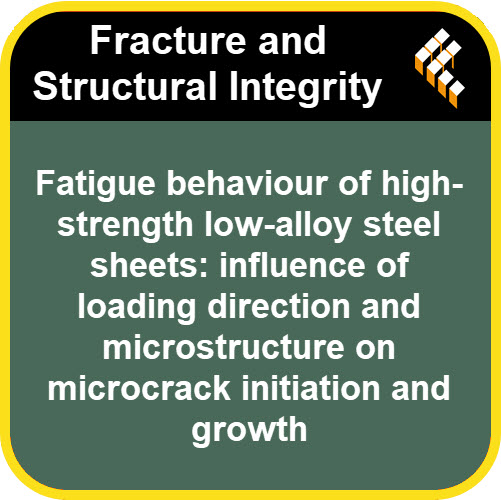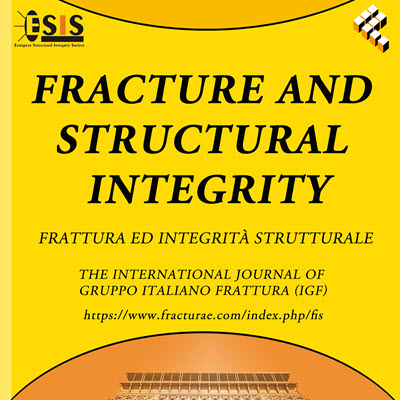Fracture and Structural Integrity: The Podcast
Stay at the cutting edge of fracture mechanics and structural integrity research with the official podcast of the Fracture and Structural Integrity journal. Join us for insightful interviews with top researchers, in-depth discussions of groundbreaking papers, and explorations of emerging trends in the field.
RSS Spotify YouTube Amazon Music
Fatigue behaviour of high-strength low-alloy steel sheets: influence of loading direction and microstructure on microcrack initiation and growth
2025-08-18
https://www.fracturae.com/index.php/fis/article/view/5568
This work presents an in-depth study of the low-cycle fatigue behaviour of ferritic-pearlitic HSLA-420 high-strength steel sheets, with emphasis on the influence of loading direction on fatigue life and damage mechanisms. Plastic strain-controlled fatigue tests were conducted along the rolling (RD), transverse (TD), and diagonal (DD) directions. Despite the nearly isotropic tensile response associated with weak crystallographic texture and similar microstructural characteristics, fatigue life varied depending on the loading orientation. RD specimens showed the highest fatigue life, nearly doubling TD at low strain and remaining over 25% at high strain. DD behaved similarly to RD at low strain but approached TD at higher strain levels. The Coffin–Manson relationship was linear in RD, while TD and DD showed bilinear trends with a slope change at Δεp/2 = 1 × 10⁻³. Transmission electron microscopy revealed that dislocation structure evolution during cycling was direction-dependent. In RD, intragranular slip bands within ferrite grains dominated and acted as primary crack initiation sites. In contrast, TD and DD exhibited subgrain structures near grain boundaries, promoting strain localization and intergranular crack nucleation. At higher strain amplitudes, compact subgrains reinforced by cementite particles favored intergranular crack propagation in TD and DD samples, contributing to reduced fatigue life.
DownloadFiletype: MP3 - Size: 29 MB - Duration: 15:09m (256 kbps 44100 Hz)
Powered by Podcast Generator, an open source podcast publishing solution | Theme based on Bootstrap
